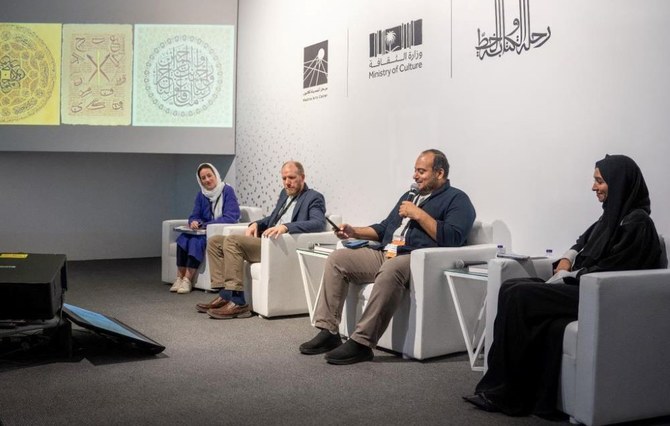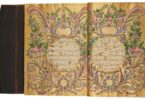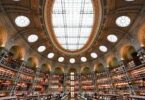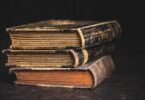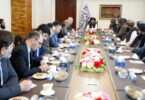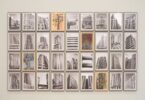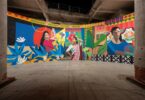RIYADH: The Ministry of Culture organized a series of seminars showcasing the traditional and contemporary practices of Arabic calligraphy, along with the cultural and aesthetic significance of the art form.
The seminars, attended by international calligraphers, artists, researchers and experts in the field, were held in conjunction with the second “Scripts and Calligraphy: Paths to the Soul” exhibition being held at the Madinah Arts Center from Oct. 15 to Dec. 23.
During the first seminar, titled “The Journey of Traditional Arts in their Transition from Classical to Contemporary Styles,” calligrapher Ahmed Rizk highlighted the importance of calligraphers adapting to their respective eras, thereby ensuring the sustainability of their art.
Calligrapher Bayan Barboud highlighted the role of digital technologies and AI in accentuating the significance of Arabic letters and reemphasizing their aesthetic attributes.
Designer Ibrahim Batchelder discussed his exploration of Islamic cultural heritage within and beyond the Arab region, emphasizing the role of Arabic calligraphy in contemporary applications to preserve the art form and propel it into the future.
Huda AbiFares and designer Azza Fahmi took part in the second seminar, titled “Lockets Around the Neck,” which delved into the incorporation of Arabic calligraphy in the creation of ornamental jewelry.
The seminar focused on the importance of preserving cultural heritage, national craftsmanship, and the ability of Arabic calligraphy to express beauty and authenticity in the realm of jewelry design.
Art professor Nada Shabout, visual artist Timo Nasseri and furniture designer Nada Debs took part in the third seminar, “Arabic Calligraphy in Contemporary Art and Design.”
They talked about Arabic calligraphy’s continuity, its links with Islamic civilization and other cultures, contemporary artists connecting with traditional art, geometric aspects and creativity theories.
The fourth seminar, titled “Arabic Calligraphy in Architecture: Chisel, instead of Reed,” was moderated by Eric Delpont, the director of the museum at the Institut Du Monde Arabe in Paris.
Lutfi Abdul Jawad, head of the research department at the National Heritage Institute in Tunisia, discussed contemporary architectural practices that shed light on the historical collaboration between calligraphers and craftsmen, as well as how modern materials enable the incorporation of calligraphy into present-day structures.
Hani Al-Huneidi, a consultant for the Abdullatif Al-Fozan Award for Mosque Architecture, discussed the significance of Arabic calligraphy in writing, architecture, inscriptions and various aspects of daily life.
Architect Samia Dabbagh said: “The contemporary style for mosque design may focus on the visual aesthetics and ignore the worshippers’ experience, and we must return to our roots and benefit from architectural models at the Al-Aqsa Mosque, the Grand Mosque and the Prophet’s Mosque.”
Calligrapher Abdulrahman Al-Shahid showcased a series of architectural designs inspired by traditional crafts, encouraging architects to enhance their urban projects by drawing inspiration from the elegance of calligraphy, light, space and poetry.
The seminars offered a space to explore the aesthetic, philosophical, spiritual and human aspects of Arabic calligraphy, by allowing experts and participants to share their personal experiences and practices.
Courtesy: arabnews

